9 Things All Golfers Must Do To Play Well This Winter!
In this video, PGA pro Clive Tucker shares some simple advice on how to play your best this winter


Golf Monthly created this content as part of a paid partnership with PING. The contents of this article are entirely independent and solely reflect the editorial opinion of Golf Monthly.
9 things all golfers must do to play well this winter!
As the seasons change, the temperature dips and underfoot conditions get softer, a whole host of different challenges are presented to golfers. Preparing for these and knowing how to overcome the difficulties will help you shoot lower scores throughout. In the video and article below, we run through some of the most important things to consider if you want to play your best this winter...
9. Maintain your rhythm
With the golf course inevitably playing longer in the winter, the temptation can be to hit the ball harder than usual. During the normal course of a round this can affect your rhythm. To help, try this golf tempo drill when you head to the range.
Give the tempo of your swing a rating out of 10, with 1 being the slowest and 10 the fastest. Most players find that when they are at their best, they swing at around 6 or 7 on this scale. One of the best things you can do is to take this number with you to the course. Then if you are feeling like your rhythm is getting a bit fast, practice swinging the club one less on the scale than your optimal speed. This should get your rhythm back under control.
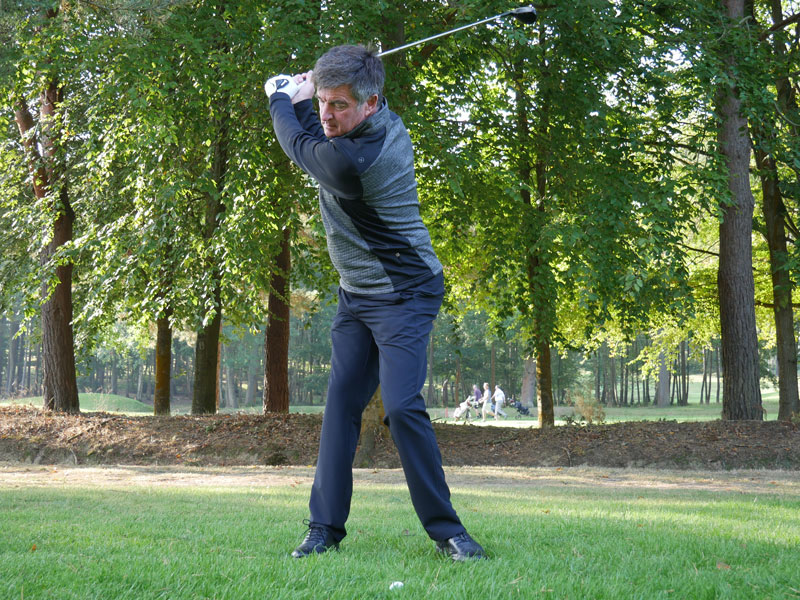
8. Pitching from wet lies
Learning how to pitch from muddy lies is one of the great challenges of winter golf. You can guard against fat strikes here by playing the ball a fraction further back in your stance and then not swinging the club quite as far in the backswing. The key when you do this is to still rotate through to your normal finish position. This should provide you with the angle of attack you need for a good strike and the right speed through impact to ensure good distance control.
7. Use modern technology
Over the last decade or so, golf clothing has come on leaps and bounds. Gone are the days of heavy, bulky garments causing restricted swings. Modern cold-weather fabrics are designed to be both lightweight and warm. They should stretch with the movement of your body allowing you to swing just as you would in the summer months. If you haven’t updated your winter wardrobe with some of the best golf windbreakers or best golf rain jackets, you’ll be surprised by how much of a difference it makes!
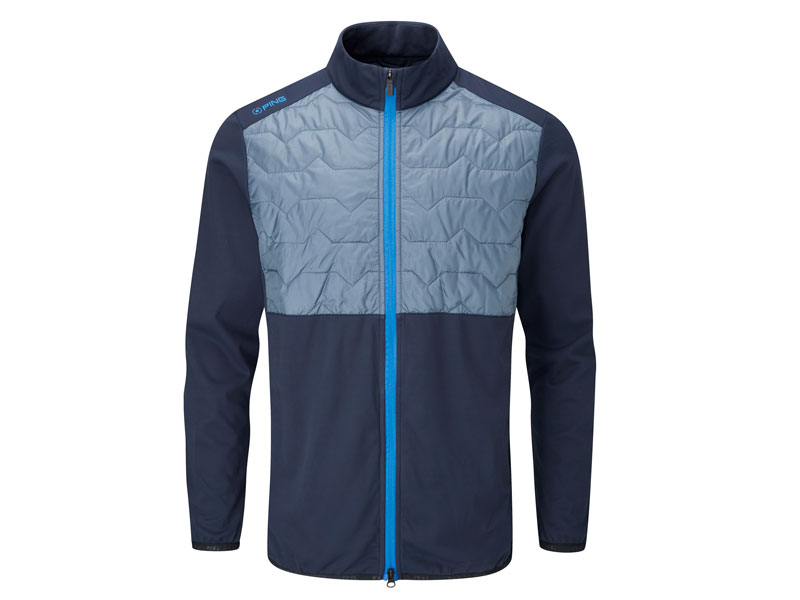
6. Reassess your yardages
What are your cold weather yardages? Not many amateurs will know but it is quite straightforward to work out. The starting point is to make sure you understand how far you hit the ball in normal, summertime conditions. Not every golfer does but it is a must and crucially, you need to know how far each club carries, not the overall distance as that will depend on ground conditions.
The general rule of thumb is that you will need to add an extra club to your usual expectations during the winter. Alternatively, you could use a harder, winter golf ball designed to offer more distance.
5. Holing out on wet greens
The problem many players face when the greens start to get wetter is their usual speed becomes a little too slow. More pace in the winter is a must as the ball will be less likely to be bumped off line by any imperfections on the green.
A great drill is to place a club down on the green so the thinnest part of the shaft is in front of the hole. The ball should hit, jump over the shaft and go into the hole - too slow and it will not get over the shaft, too fast and it will jump over the hole. If you can start to train this speed, you will develop a much more positive pace to help you hole out better this winter.
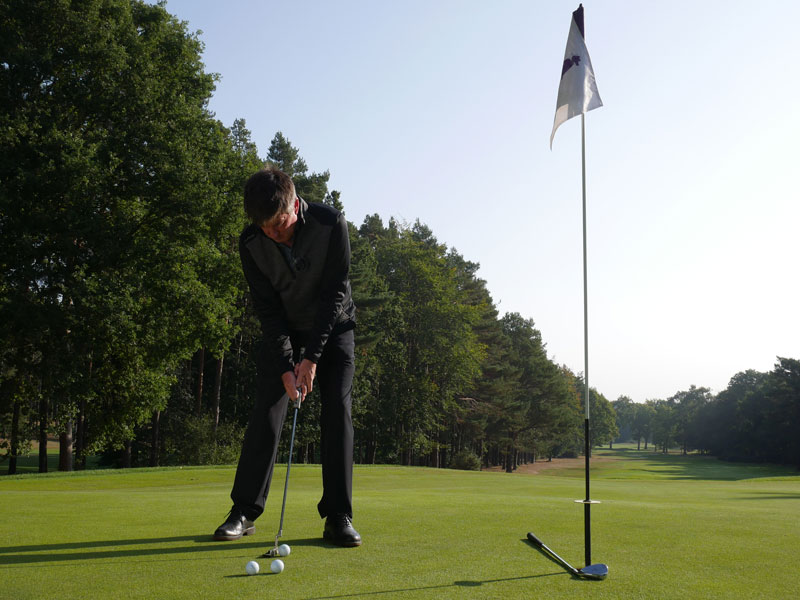
4. Playing from compact sand
Golfers often underestimate the difference wet bunker tips can make when rain has left the sand heavier and more compact. It makes greenside bunker shots more challenging, so you will need to make some adjustments.
You need to strike the sand a fraction closer to the ball and to present the club with less bounce. To do this, move the ball back in your stance by about an inch and square up the face at address. From there, make a normal swing and you should avoid those disastrous strikes that can really cause you trouble in the sand.
3. Stay warm and dry
Keeping yourself warm and dry while you are out on the course, exposed to the worst of the conditions, is a must. The temperature and ground conditions will both prevent the ball from going as far as it would in the summer. If you let yourself get too cold or you start to feel uncomfortable in the wet, this will also have an impact. Think carefully about the clothing you wear and try to pick garments designed to help you perform in different weather conditions.
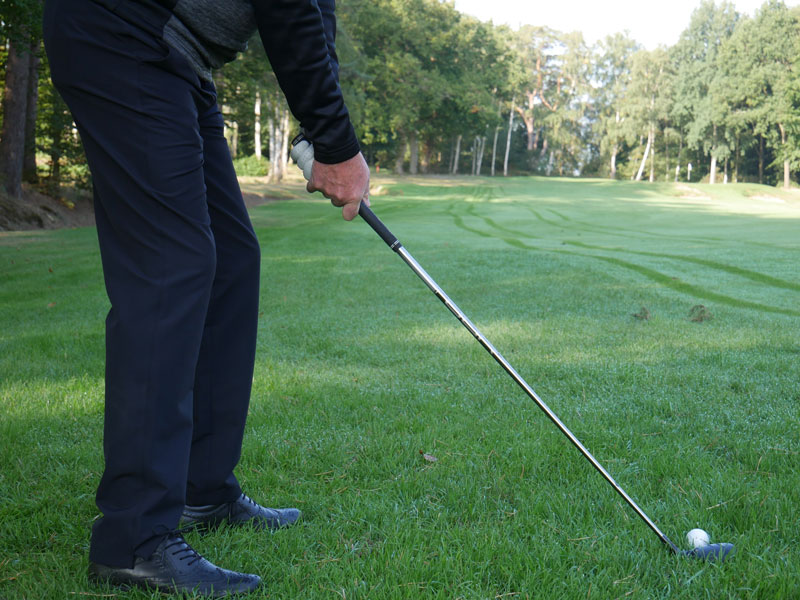
2. Choose the right shot
Learning how to choose the right club around the green is an essential skill to develop. The advice here is that less is more. If you take a big swing with a lofted club there is more that can go wrong than a shorter swing with less loft. In the winter, when the ground conditions are softer, this becomes even more important.
So, choose a less lofted club and then restrict your hand action as much as possible. You should feel that your wrists remain quite wooden during the swing but that your lead shoulder rotates nicely through the ball. Pick a spot on the green to land the ball on and let it roll out like a putt.

1. Playing from soft ground conditions
When the ground conditions are soft you need to think about your wet lie chipping method. Moving the ball a fraction further back in your stance to ensure you make good contact is a good place to start, but be careful, as you will have a tendency to push the shot a little. To negate this, simply aim a few yards further left. This is the best way to find the consistency of contact and accuracy that you are looking for.
Subscribe to the Golf Monthly newsletter to stay up to date with all the latest tour news, equipment news, reviews, head-to-heads and buyer’s guides from our team of experienced experts.

Location: Mannings Heath
Clive spent ten years as a playing professional before making the move into elite coaching. He's worked with a number of Tour professionals, and one of his great strengths is being able to tailor his instruction for each student no matter what their level.
Teaching philosophy:
Make changes and growth pertinent, measurable, simple and enjoyable. Give students the skills to develop and manage their game as well as possible. Ultimately, help them to become independent.
Significant influences:
I was taught by some very gifted coaches whilst playing on Tour, and have watched teachers with all kinds of philosophies whilst I've been coaching for the last 20 years. All have had such a positive effect. George Robb had a very keen eye; David Leadbetter was extremely diligent; Denis Pugh, generous and encouraging; Mac O`Grady was a fountain of knowledge, and Pete Cowen an inspiration. Michael Dalgleish was also a world class physio.
Greatest success story:
Working with Graeme McDowell and David Howell have been particular highlights. During my time working with them, they rose from roughly 150th in the world to 4th and 9th, respectively, and competed in six Ryder Cups between them.
-
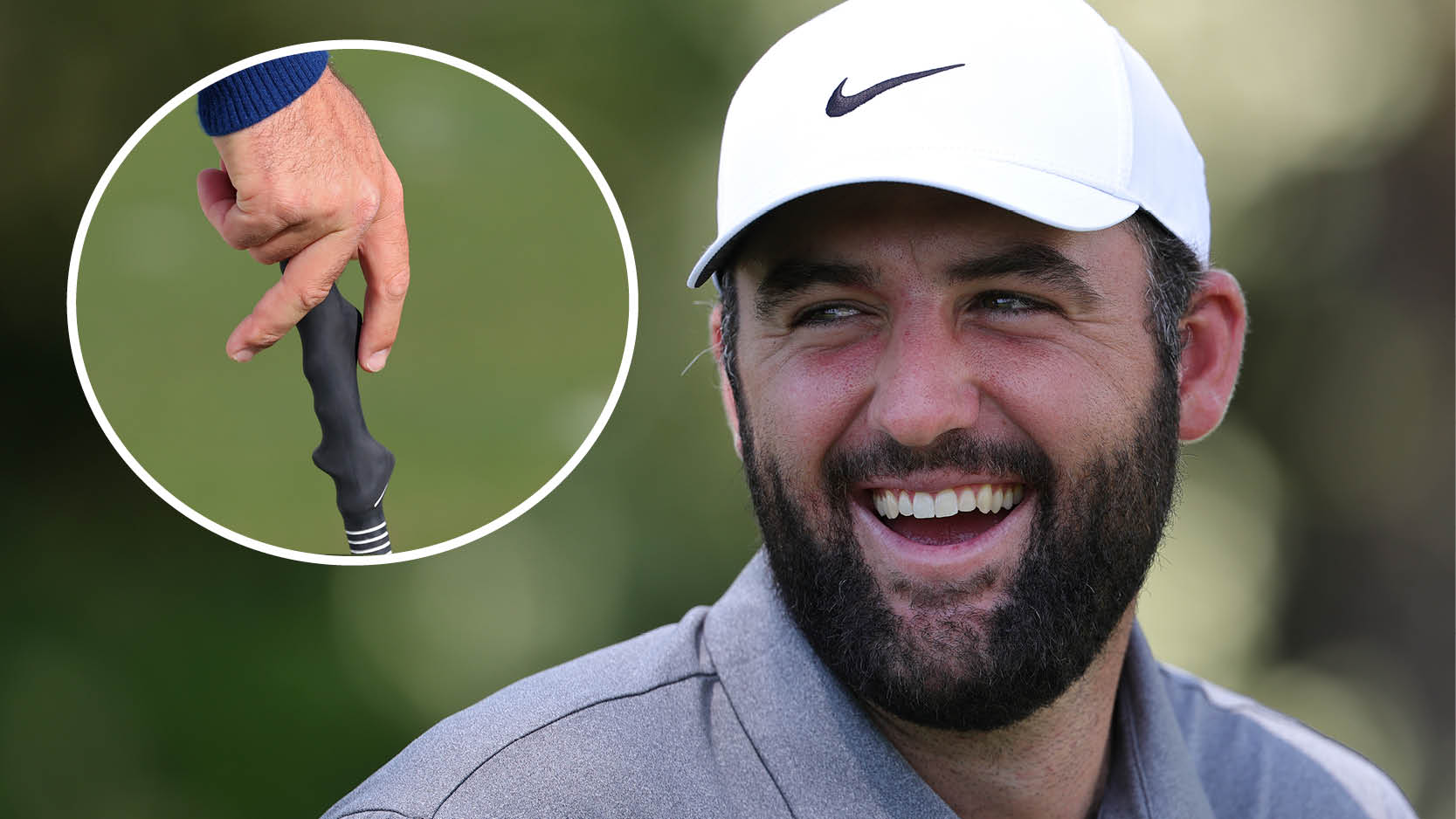 I Finally Caved And Bought Scottie Scheffler's 'Must Have' Training Aid, And It's Now On Offer This Black Friday
I Finally Caved And Bought Scottie Scheffler's 'Must Have' Training Aid, And It's Now On Offer This Black FridayScottie Scheffler's 'non-negotiable' grip training aid is at the lowest price we've ever seen.
-
 Winter Is Coming... And Now Is The Time To Work On Your Short Game With These Black Friday Putting Mat Deals
Winter Is Coming... And Now Is The Time To Work On Your Short Game With These Black Friday Putting Mat DealsPutting mats are an easy way to improve your game on the greens and, right now, you can save up to 30% on a number of the best models